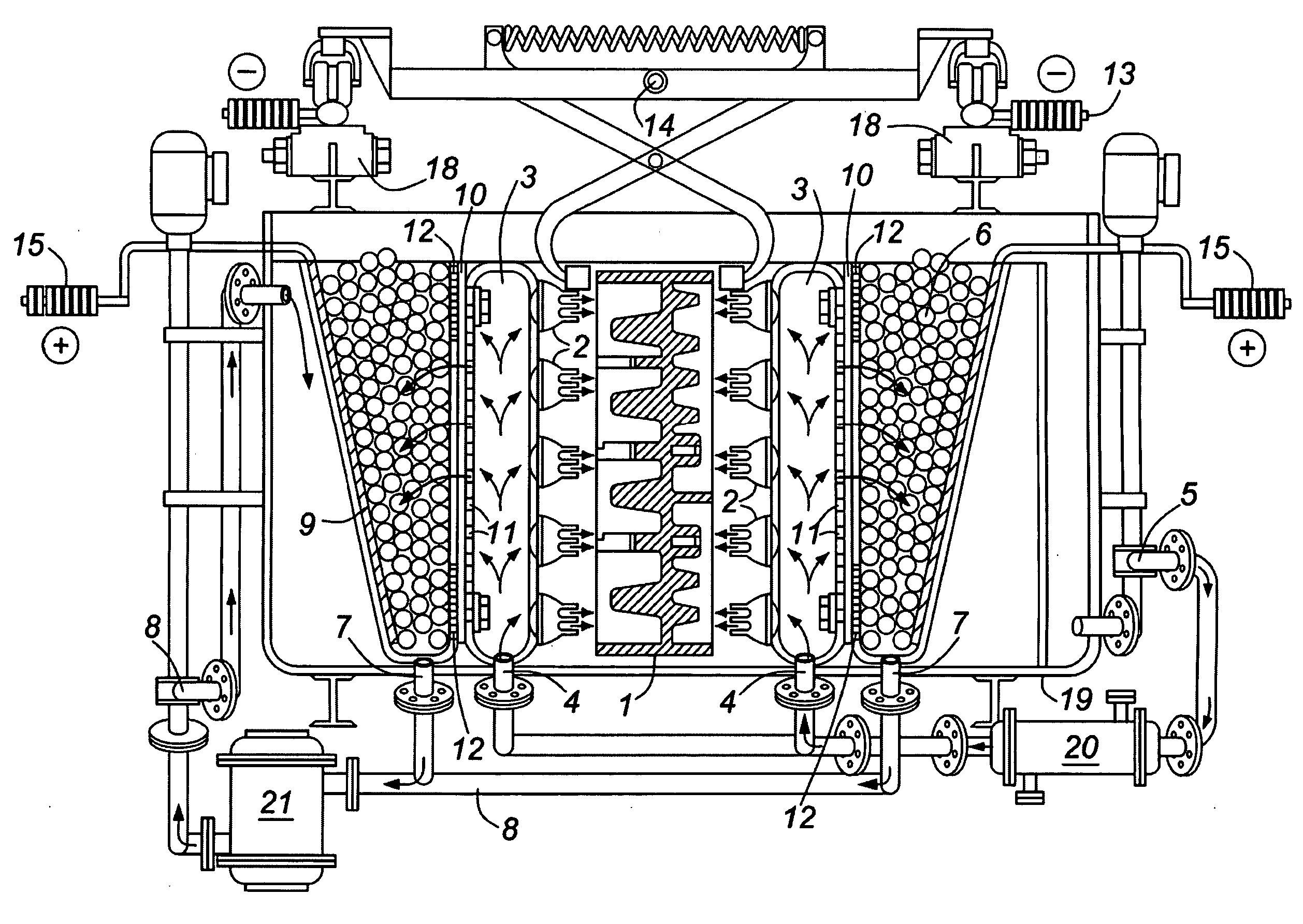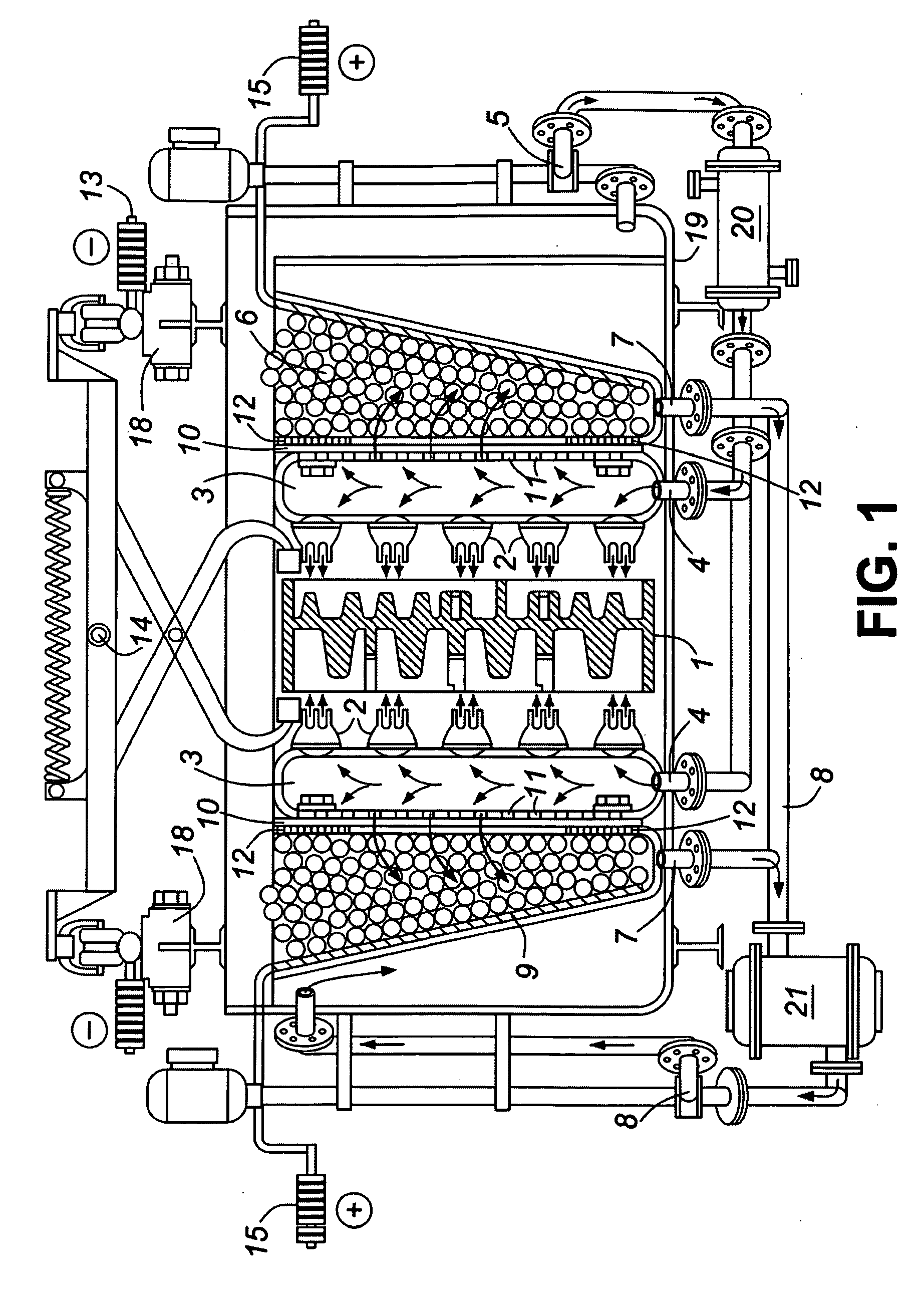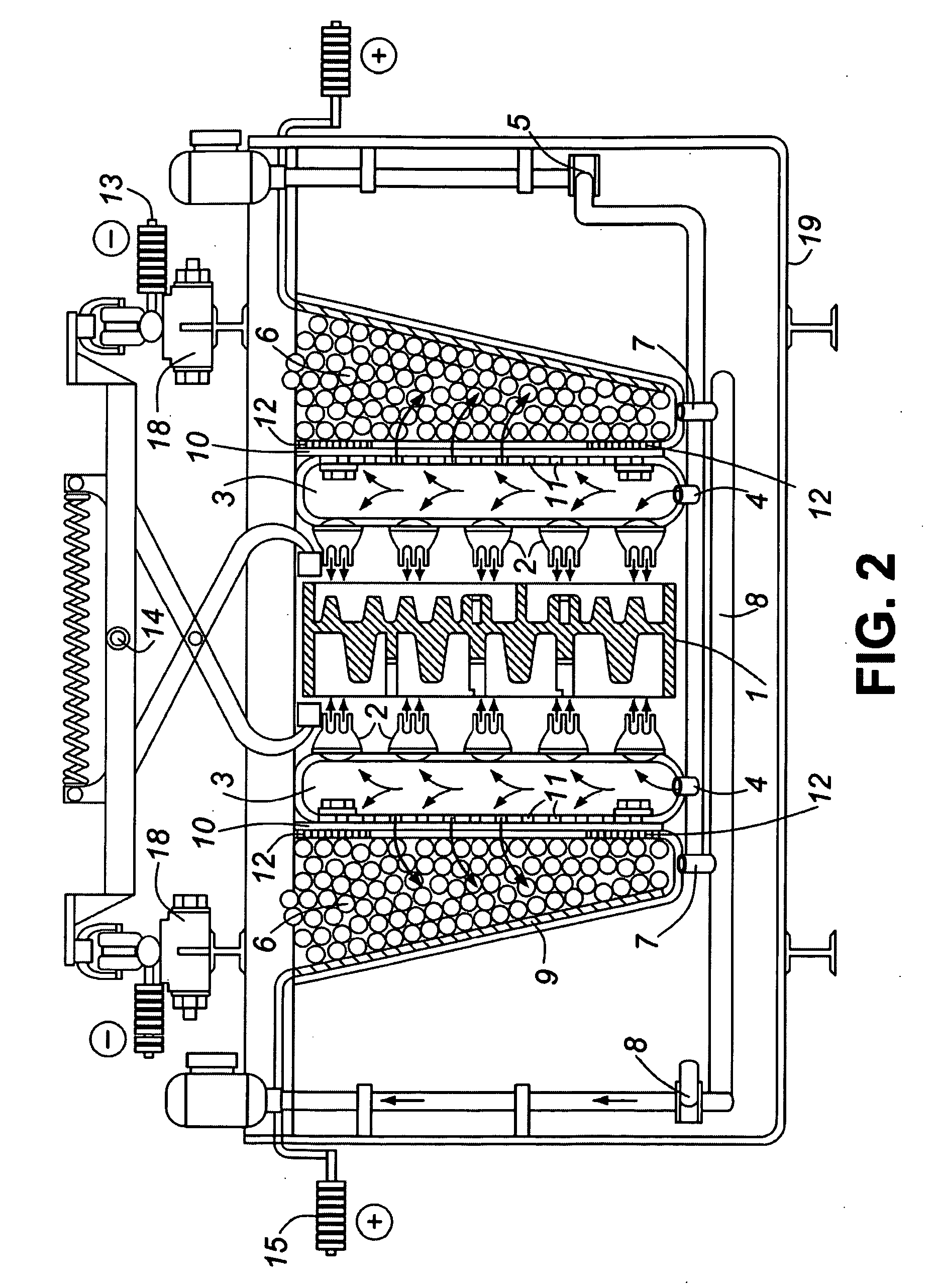Plating apparatus with direct electrolyte distribution system
a technology of direct electrolyte distribution and plating apparatus, which is applied in the direction of electrolysis components, manufacturing tools, electrolysis processes, etc., can solve the problems of limiting process capability, limiting process capability, and not providing an even plating thickness, so as to improve thickness equity and less plating
- Summary
- Abstract
- Description
- Claims
- Application Information
AI Technical Summary
Benefits of technology
Problems solved by technology
Method used
Image
Examples
Embodiment Construction
[0032]Referring now to the drawings, in which like numerals refer to like components or steps, there are disclosed broad aspects of various exemplary embodiments.
[0033]FIG. 1 is a partially schematic, partially cross-sectional view of a first exemplary embodiment of a plating apparatus with direct electrolyte distribution system.
[0034]The plated part (1), or two parts combined and racked together, is placed in the center of the plating bath next to or between positively charged electrodes, anodes (6). The apparatus is filled with electrolyte. The level of the electrolyte is controlled by the height of a leveled wall or by any other method.
[0035]In various exemplary embodiments, overflow of electrolyte, if needed for electrolyte flow control, is collected in a special compartment (16) and pumped back by pump (5) into specially designed collector-distributor (3). This is shown in FIG. 3 and FIG. 4. In the embodiments of FIG. 1 and FIG. 2, the system is all connected such that it does ...
PUM
| Property | Measurement | Unit |
|---|---|---|
| Flow rate | aaaaa | aaaaa |
| Electrical conductor | aaaaa | aaaaa |
Abstract
Description
Claims
Application Information
 Login to View More
Login to View More - R&D
- Intellectual Property
- Life Sciences
- Materials
- Tech Scout
- Unparalleled Data Quality
- Higher Quality Content
- 60% Fewer Hallucinations
Browse by: Latest US Patents, China's latest patents, Technical Efficacy Thesaurus, Application Domain, Technology Topic, Popular Technical Reports.
© 2025 PatSnap. All rights reserved.Legal|Privacy policy|Modern Slavery Act Transparency Statement|Sitemap|About US| Contact US: help@patsnap.com



